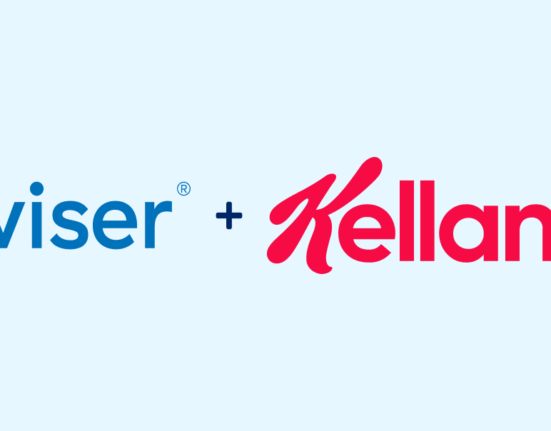Direct-to-consumer (D2C or DTC) brands are everywhere these days: advertised on buses, pulling shoppers in on Instagram, and increasingly setting up storefronts on Main Streets around the world.
While online retail channels were a great way to build their businesses initially, there are many added benefits to brick-and-mortar as well. These include easier product repairs (think Warby Parker glasses) and more opportunities to build relationships with new and existing customers as they browse offerings in real life.
So what exactly should D2C eCommerce brands do to effectively add in-store channels? Below is our ultimate guide that covers all of the considerations brands need to take into account when considering expanding their online business.
How D2C Brands Can Approach the New Channel
First, (after reading up on what D2C means in retail) brands must start by acknowledging that there are at least two different paths to take.
A retailer might choose to open their own stores, like Away or Allbirds. This store would be dedicated solely to their products and owned and operated by the brand. Another option is to partner with a major retailer like Target or Walmart to sell their products within a high traffic store, like Dollar Shave Club or Honest Company have done.
Deciding to work with a partner means trusting them to provide a high-quality customer experience, positioning your products appropriately, and not cutting your prices below your minimum advertised price. It also comes with the benefit of an established marketing machine and a strong customer experience.
It’s also important to note that not all D2C brands need a physical presence per se. In fact, there are brands that tend to get more out of the brick-and-mortar experience. These are the product types that may be best suited to physical retail:
- High ticket items—Buying an expensive product sight unseen is difficult for many consumers. While a brand might offer a generous return window, the hassle of having to ship an expensive product back to the warehouse is not one any consumer wants to deal with. A brick-and-mortar presence helps both with giving shoppers the peace of mind afforded by trying on or trying out a product they are considering. Not to mention, they are also able to ask questions without waiting in an online chat line. And if the item doesn’t end up working out, returning it to a store is often much easier than boxing it up, waiting in line at the nearest Post Office, and being unsure when exactly they will receive their refund.
- Products with wide appeal—To put it simply, not everyone wants to be or is online. Some shoppers feel more comfortable shopping in person. Giving them the opportunity to discover and explore your products will make it possible to gain them as loyal customers.
- Experience-based products—Shoppers don’t just go into stores when they need something, they go to browse, spend time with friends and family, and discover exciting new things. D2C brands have the opportunity to translate the look and feel of their website to a highly curated and personalized in-store experience. After all, these brands found success online by really understanding their target market and directly applying this to consumer marketing. Taking these learnings and applying them to a physical location will help make it a special experience that a consumer won’t be able to keep to themselves. Glossier did a great job of this with a pop-up they had in San Francisco in 2018. The store enticed shoppers with makeup to try and buy and tasty food for sale. This unique combination brought beauty enthusiasts out en masse to see the products for themselves.
Now that we’ve broken down the products that are likely to succeed on Main Street, how can D2C brands create a plan to launch successfully?

1. Understand the Risks
Opening a physical store is much different than perfecting fulfillment through warehouses. A brand will need to hire and train staff, deal with potential theft, provide consistently excellent customer service, and rethink merchandising and marketing approaches frequently.
A number of brands have been able to accomplish this in a way that is additive to their D2C model. But if exploring these realities raises more questions than answers, then selling your product line in a big-box store might be a better way to explore in-person retail. In that case, there are far fewer logistics to think about, with the added bonus of being associated with a well-respected retailer. In the long-term, you may decide to open a store after an effective foray with retail partners. Either way, with great risk, comes the potential for great reward.
2. Carefully Plan Your Footprint
If a store is on your mind, try out brick-and-mortar first through a pop-up to verify that shoppers will move beyond your digital channels and buy from you in person. When it is clear that a store is the right decision, take the opening and expansion slowly. Some traditional retailers offer grim examples of opening too many stores and having to deal with the painful process of closing several down and laying off workers. When D2C companies take a slow, methodical approach, they can follow a sustainable plan that opens stores based on customer and retail data.
3. Create Synergy Between Online and In-Store Channels
Sales might not be through the roof in-store after the first couple of months. The store might serve more as a way for new customers to discover the brand and begin considering it. They might choose to buy online after trying clothes on the previous week. And this is perfectly normal, as the brand began as a digital-first upstart.
All sales channels need to serve one another: the look and feel needs to be consistent enough so that shoppers get the same messaging and images from your website and your stores. Some retailers like to place iPads in their dressing rooms or stores in case a size or color a potential customer wants isn’t available. Having the opportunity to complete the purchase online in a few taps and get the right product delivered to the shopper makes it much less likely that they will leave empty-handed.
Another way to make the most out of your various selling channels is to use your store as a fulfillment center. Shipping costs can be high and relying on shipping partners isn’t always risk-free. Products might arrive late or damaged at times. But if a consumer opts to pick up their order in-store, then you can cut out all of the uncertainties and they can get the products faster. It’s a win-win.
4. Stay Focused on the Products and Relationships
Experience is essential to taking the D2C model into the real world. However, making sure that customers are learning about and buying the products is the real point of opening a physical space. For example, including a branded cafe and a running club tied to the store, but only if this serves the greater goals of the brand. Experiences must be tied closely to the core product to not confuse consumers. Nespresso has boutique cafes in which it offers coffee and sells its famous machines and Nike hosts running clubs. These experiences bring potential customers in for the right reasons and are high-quality ways of encouraging them to make a purchase or ask about relevant product lines.

The Bottom Line
The direct-to-consumer model is effective for a number of eCommerce businesses; however, selling exclusively online makes it hard to have a direct line of communication with shoppers. Beyond providing an experience-rich selling channel, employees also have the opportunity to do customer research organically. While increasing sales and answering questions, they can also ask what a particular consumer thinks of their new products and what they might like to see in-store next season.
If a D2C company chooses to sell through a third-party retailer, it might be harder to get this direct feedback from customers, but they will have automatic foot traffic. This is especially helpful for smaller players in the D2C space. Having a retail partner that can offer legitimacy and an existing end-to-end retail platform can help accelerate positive outcomes for growth plans and marketing strategies.
Direct-to-consumer companies have a lot of research to do in order to make a splash in physical retail. There are plenty of success stories to consider, just as there are cautionary tales to avoid. The trick to making sure the transition goes smoothly is to create a customized plan with the tips above serving as a guide. No two direct-to-consumer businesses are the same; each needs to take stock of their specific priorities and goals in order to devise a plan that will stay true to their brand while also opening up new opportunities to connect with customers.
Opening stores comes with novel challenges for D2C brands. Get one-on-one support from Wiser Solutions to tackle pricing, marketing, and sales the right way.














